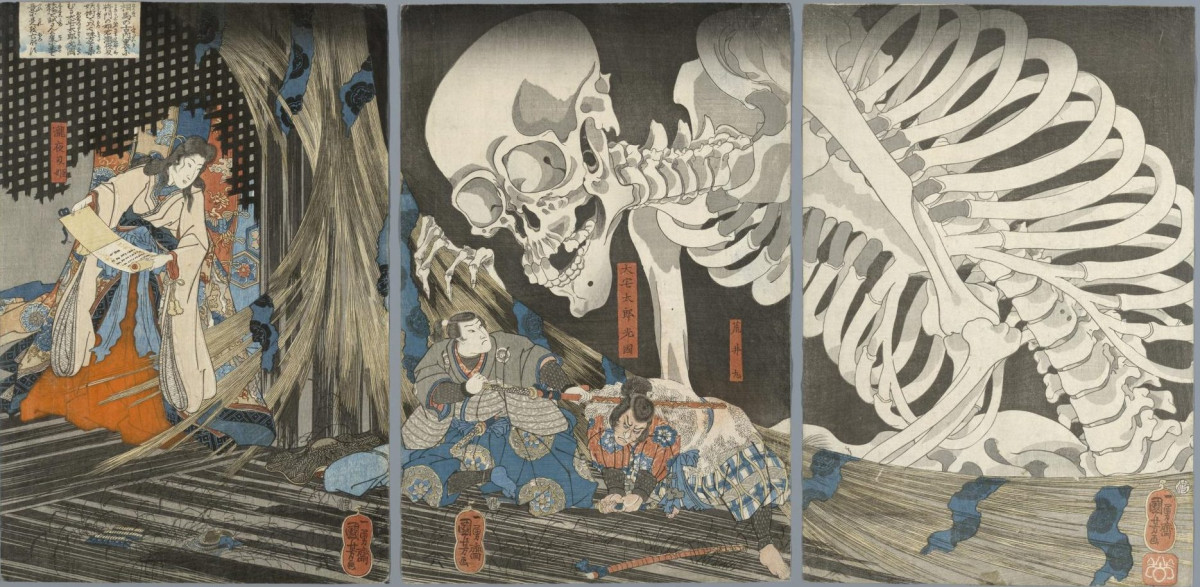
“Wicked” History in Print: Thoughts on Utagawa Kuniyoshi’s (1797-1861) Triptych, ‘Takiyasha the Witch and the Skeleton Demon’

THIRD THURSDAY LECTURE
About the Talk:
One of the most well-known print triptychs in Japanese art history, Utagawa Kuniyoshi’s (1797-1861) 'Takiyasha the Witch and the Skeleton Spectre' of 1843-47 presents a “wicked” history or a history that is both creatively reimagined and concentrates on less than valorous deeds. Not to mention there is a supernatural element. A giant animated skeleton is the central figure in the composition but, as the inscription at the upper left reminds us, could not exist without the magic of Princess Takiyasha. She is an historical figure, the daughter of Taira Masakado (? – 940) who led a failed rebellion against the emperor and thus is known to Japanese today as one of the three great vengeful spirits of Japan. Takiyasha’s life after the death of her father was fictionalized by the popular writer, Santō Kyōden (1761-1816) to much success. It is this story, 'The Tale of Utō Yasutaka’s Loyalty' (1806), that inspired 'Takiyasha the Witch and the Skeleton Spectre'. This talk will analyze 'Takiyasha the Witch and the Skeleton Spectre' with the aim to better understand how Japanese of the mid-nineteenth century might have conceptualized both Princess Takiyasha as well as the skeleton demon that she conjured, and in so doing, will touch upon history, folklore, Daoism, Buddhism, indirect transnational dialog, literature, popular culture, proto-anatomical studies, hidden political protest, and good old-fashioned revenge.
About the Speaker:
Pauline Ayumi Ota is an art historian whose research examines late eighteenth and early nineteenth century cityscapes/views of Kyoto, early modern Japanese maps, and the supernatural in Japanese art. She holds an appointment in the Department of Art and Art History as Associate Professor of Art and Art History (History of Japanese Art), as well as serves as a member of the Asian Studies Program Steering Committee and the Global Studies Fellows Program Steering Committee, at DePauw University in Greencastle, Indiana (USA).
Dr. Ota’s recent publications include “Mapping the Yodo River and its Banks” in Artibus Asiae from 2020 and the December 2021 Andon article, “The Poetry of Play: Hybridity in Amusements of the Four Seasons of Kyoto.” She is also finalizing her book manuscript, Seeing the City Anew: Maruyama Ōkyo’s Cityscapes of Kyoto, 1758-1790 and Their Afterimages.
Image: Utagawa Kuniyoshi 歌川国芳. Soma no furu-dairi ni Masakado no himegimi Takiyasha. 1845-1846. Woodblock print. British Museum, 2008,3037.20106. © The Trustees of the British Museum